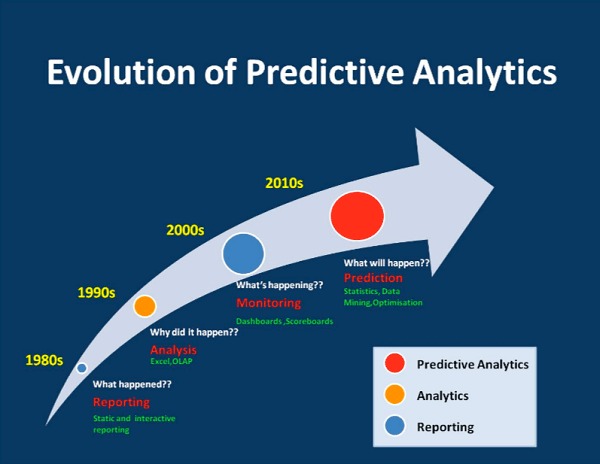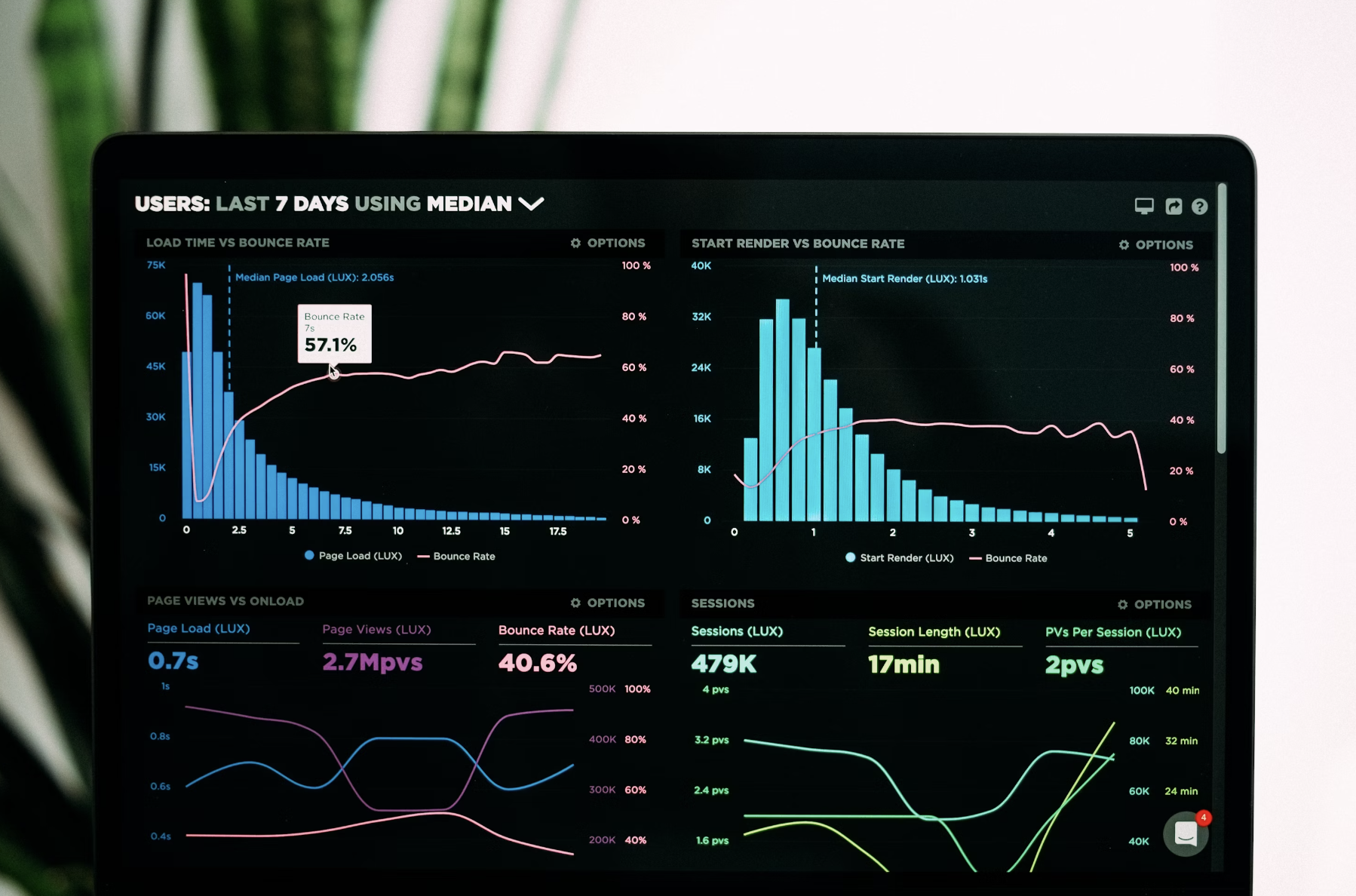 News
News
It’s clear that businesses are constantly seeking innovative ways to stay ahead amidst a competitive and tough period for the IT industry. While revenue in the IT Services market is projected to reach US$1,364.00bn in 2024. Now, the fusion of Predictive Analytics and Custom Software Development has emerged as a pivotal strategy for companies aiming to adapt, innovate, and outperform competitors. Predictive Analytics employs advanced statistical algorithms and machine learning techniques to forecast future trends from historical data. Custom Software Development, conversely, focuses on crafting applications tailored to the unique requirements of a business. The integration of these two domains can significantly elevate the decision-making process, leading to the creation of custom-made software that anticipates and adapts to user needs before they even arise. Keep reading to learn more about how predictive analytics can be of use in custom software development projects!
Understanding Predictive Analytics in Detail

Predictive analytics stands at the forefront of many modern business strategies, offering a forward-looking perspective based on data-driven insights. This technology sifts through vast amounts of historical and current data to identify patterns, using these insights to predict future outcomes. With the global predictive analytics market projected to grow at a compound annual growth rate (CAGR) of 14.4% from 2020 to 2027, reaching a valuation of $22.1 billion, the widespread adoption across sectors underscores its value. Industries from finance to healthcare are harnessing predictive analytics to optimize operations, enhance customer service, and drive revenue growth, demonstrating its broad applicability and potential for transformative impact.
The Role of Predictive Analytics in Custom Software Development
The application of predictive analytics within custom software development marks a complex shift in how digital solutions are conceptualized and realized. This approach not only streamlines development processes but also imbues applications with the capability to predict and respond to future user behaviors and trends. A prime example is the recommendation algorithms used by streaming services like Netflix and Spotify, which analyze user data to personalize content, significantly enhancing user engagement and satisfaction. This level of personalization and anticipation sets the bar for what modern software applications can achieve, illustrating the profound impact predictive analytics can have on software development.
A Deep Dive Into Different Predictive Analytics Techniques
Predictive analytics employs various statistical and machine learning techniques to forecast future events based on historical data. These methodologies are crucial for deriving insights and making informed decisions across diverse fields. Each of these has its unique advantages and applications, making them indispensable tools in the predictive analytics toolkit. Selecting the appropriate method depends on the specific requirements of the task, including the nature of the data and the prediction objective. Here are five core predictive analytics techniques:
Regression Analysis:
This technique is fundamental to predictive analytics, used to identify the relationship between a dependent variable (the outcome variable) and one or more independent variables (the predictor variables). Linear regression is employed for predicting a continuous variable, whereas logistic regression is used for predicting a binary outcome.
Decision Trees:
Decision trees are a graphical representation that uses branching methodology to illustrate every possible outcome of a decision. This method is versatile, suitable for both classification and regression tasks, and works by breaking down a dataset into smaller subsets while, at the same time, an associated decision tree is incrementally developed.
Random Forests:
An extension of decision trees, random forests improve prediction accuracy through ensemble learning. The method constructs multiple decision trees and aggregates their predictions to produce a single, more accurate outcome. This technique reduces the risk of overfitting and is robust against noise within the data.
Neural Networks:
Inspired by the biological neural networks that constitute animal brains, neural networks are a set of algorithms designed to recognize patterns. They interpret sensory data through a kind of machine perception, labeling, or clustering of raw input. These complex models are particularly effective for recognizing patterns and trends in large, unstructured datasets.
Time Series Forecasting:
This method involves analyzing a series of data points collected over time to predict future values. Time series forecasting is essential for various applications, including economic forecasting, stock market analysis, and demand planning. The technique takes into account trends, seasonal variations, and other cyclical patterns in the data.
Key Uses Of Predictive Analytics in Custom Software Development
Predictive analytics in custom software development represents a strategic approach to anticipate future trends, user behavior, and potential challenges, allowing developers and businesses to make data-driven decisions. This foresight can significantly enhance the quality, usability, and efficiency of software products. Incorporating predictive analytics into custom software development not only enhances the technical aspects of a project but also aligns product development with business objectives and market needs, ensuring that the software delivers maximum value to both the business and its end-users. Here are some key applications of predictive analytics in custom software development projects:
Requirement Forecasting:
Predictive analytics helps in understanding future user requirements and market trends. By analyzing past and current data on user interactions and feedback, developers can predict what features and functionalities will be in demand. This proactive approach enables the creation of more relevant and user-centric software solutions.
Personalization:
Custom software development often aims to provide personalized experiences to users. Predictive analytics can analyze user behavior, preferences, and engagement patterns to tailor the software experience to individual users. This can include personalized content, recommendations, and interfaces, enhancing user satisfaction and engagement.
Quality Assurance:
By predicting potential faults and issues in the software development process, predictive analytics can improve quality assurance practices. Analyzing historical data on bugs, code changes, and testing results allows teams to identify patterns that may indicate future risks, enabling preemptive action to mitigate these issues before they affect the project.
Performance Optimization:
Predictive analytics can forecast future system loads and usage patterns, helping developers optimize software performance. By understanding how software is expected to be used, resources can be allocated more efficiently, and scalability issues can be addressed proactively, ensuring smooth operation under various conditions.
Security Threat Prediction:
Security is a critical concern in custom software development. Predictive analytics can be used to identify potential vulnerabilities and predict future security threats by analyzing patterns in security breaches, attack vectors, and system weaknesses. This allows for the implementation of stronger security measures and proactive threat mitigation strategies.
Cost Management:
By forecasting project timelines, resource requirements, and potential bottlenecks, predictive analytics can help in more accurate budgeting and cost management. This foresight helps in allocating resources more efficiently, reducing waste, and avoiding cost overruns.
User Retention and Engagement:
Predictive models can analyze user behavior to identify those who are at risk of churning or disengaging with the software. This enables developers to implement targeted strategies to retain these users, such as through personalized offers, updates, or support, ultimately enhancing user loyalty and lifetime value.
Market Positioning and Strategy:
Predictive analytics provides insights into competitive trends and market dynamics, helping businesses position their software products strategically. By understanding future market conditions and competitor actions, businesses can make informed decisions about product launches, marketing strategies, and business development.
Implementing Predictive Analytics: A Step-by-Step Guide
Successfully integrating Predictive Analytics into Custom Software Development entails a structured approach. Here’s what the process should look like!
Objective Identification: Clearly define the business objectives and how Predictive Analytics can address them within your software project.
Tool Selection: Choose the predictive tools and platforms that align with your project's needs and your team's expertise.
Data Preparation: Prioritize high-quality data collection and preparation to ensure the accuracy of your predictive models.
Model Development: Develop predictive models tailored to your specific business questions and validate their accuracy through testing.
Continuous Improvement: Predictive models are not set-and-forget solutions. Regularly update your models based on new data and feedback to maintain and improve their accuracy.
The Nearshore Advantage: Outsourcing Analytics & Custom Software Development
Opting for Nearshore Software Development - the practice of outsourcing development tasks to countries that are geographically close - presents a strategic advantage in today's globalized market. This model offers the dual benefits of cost efficiency and cultural compatibility, coupled with the expertise in emergent technologies such as Predictive Analytics. Latin America, in particular, has emerged as a vibrant hub for Nearshore Development, boasting a rich talent pool that is both technically proficient and culturally aligned with North American business practices. The proximity of countries like Mexico, Colombia, and Argentina facilitates seamless collaboration, real-time communication, and agility in software development projects, making Nearshore Development an attractive proposition for companies looking to leverage Predictive Analytics in their custom software solutions.
Access Affordable Custom Software Development With Blue Coding’s Nearshore Outsourcing Services
The integration of predictive analytics into custom software development, particularly through the Nearshore Development model, represents a powerful strategy for businesses seeking to innovate and excel in the digital era while maximizing cost-saving opportunities. By combining the predictive power of analytics with the tailored approach of custom software, your organization can create dynamic solutions that not only meet current needs but also anticipate future trends. As the tech industry continues to evolve, the demand for such forward-looking capabilities will only grow, highlighting the importance of adopting predictive analytics as a core component of software development strategies.
Nearshore development offers a pathway to access the requisite expertise and technological capabilities, providing a cost-effective, efficient, and strategic avenue to harness the benefits of predictive analytics in custom software projects. At Blue Coding, we have a team of developers highly proficient in a variety of tech stacks, ready to develop and optimize your projects. Contact us today to schedule a free discovery call if you want to learn more about our nearshore custom software development services!



